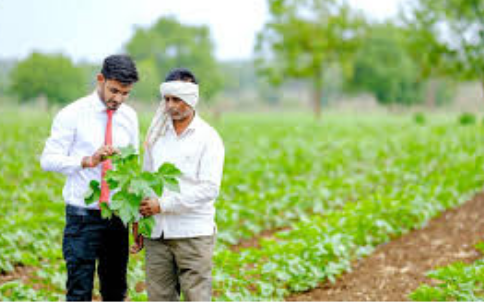Indian agriculture has an extensive history of over 10 thousand years. Currently the country is ranked second in terms of agricultural production in the world. Though its contribution to GDP of the country is sliding down it is still significant as the agricultural sector recruits 59% of the total manpower. The government’s role in agriculture remains diverse and varied. It takes several forms like import-export policies and several domestic policies like price support, direct payments and input subsidies which are seen justifying economic, environmental and social benefits to the society.
Also read: MSWM in Urban Affairs
Hidden subsidies
Cash payment is a visible form of subsidy to producers/consumers given by government but, several hidden forms of subsidies also exist. Reduced tax liability, low interest on government loans, government’s equity participation, procurement of food grains at higher than market prices and their sales at lower market prices are various subsidies not visible. Subsides promoted pro-poor growth according to some studies. The Green Revolution days of 1960 and later in 1980s saw increased subsidies in agriculture on fertilizers, irrigation water and rural electricity. The number of irrigation pumps swelled aiding to green revolution and the production of two main cereals – wheat and rice Agriculture and the fertilizer use in farming increased enormously. Thus the S & T Innovation method was ‘productionist’ in its approach ignoring the organizational and institutional aspects which are crucial in innovation systems terminology for the economic development of the nation.
Also read: Ageing India looks for a decent living
Increasing cost of subsidies
Since early 1980s the cost of subsidies increased significantly upto more than 25%. Thus more money was spent on the agricultural subsidies than on literacy. Since mid-90s, the growth of agriculture productions lackened due to neglect of investment on physical infrastructure, research and extension. Research on agricultural subsidies in India showed that both in post-liberalisation years at the country level as well as subsidies recorded high increase in absolute terms. It zonal levels the comparison is made to post liberalization period (2006-07) to that of pre-liberalisation year (1990-91) it was said that subsidies have increased 8.32 times while which productivity increased by only 1.1 times.During the same period in the west zone subsidies increased by 11.95 times followed by south zone (8.93 times), east zone (7.67 times), north zone (7.49 times) and north-east zone (6.28 times). The corresponding figures for increase productivity are remained at 1.1 to 1.9 percent.
Also read: The Lost Horizons
Per capital subsidy less in India
Every country provides agricultural subsides, but India has vast population dependent on agriculture and subsides given per capita are still very low compared to other countries. Strangely developed countries provide more quantum of subsides for less member of people compared less subsides for more farmers in developing countries. India provides subsidy of $14 per hectors which constitutes 2.33% for 60% of the dependent population on agriculture. EEC countries give subsidy of $82 per hc. i.e.37% for 8%of the population. In USA the subsidy per ha. is $32 i.e.26% for 5% of the population. Japan has 4% of the dependent population on agriculture and get $35 per hc. Which constitutes 72%.
Also read: Pandemic and the Pandora’s box
In recent years, direct cash subsidies are increasingly extended for not only to all farmers irrespective of the need, but also to several other sections of the society. The trend becomes threatening if indiscriminately expanded for mere political gains and populist votes.
Also read: Musings on pandemic impacts





Yes I agree. DBT transfer by Govt, for election advantage, in no way helps farmers to get reward for their hardwork. Instead it make them lazy. On the other hand, Govt should encourage farmers, to produce superior categories of paddy, which gives higher yields, procure that directly from farmers at a gainful or fair price,by totally eliminating middle man from the system…This results not only in augmented agriculture production but also enhance primary sector employment….